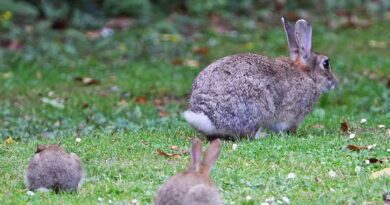Principles of Reproduction in Rabbits
Because rabbits are known to be very sexually active they should not be housed together to avoid inbreeding (including between family members mating before adulthood or mating with the wrong partner).
Males (Bucks) and females (Does) prior to age of maturity must be separated into single cages or hutches. Mature female rabbit (also known as Doe) normally comes into ‘season’ or ‘heat’ periodically by demonstrating signs of high receptiveness to male for purpose of mating.
These symptoms may include restlessness in the cage. Then they hurriedly try to leave the cage to join the other rabbits in the cage and rub their throats with water or our treats. Other symptoms that can be observed include vaginal discharge or physical changes in the vagina such as redness or swelling of the genitals.
When these occur, the producer is encouraged to transfer the doe to the cage where the buck is housed without any further delay. Some bucks may be timid to mount on the doe if such bucks are taken from their cages to where the doe is housed.
A delay in introducing a doe on heat to a buck immediately may result in loss of the experience to be receptive to the male. The act of mating or copulation also stimulates the release of eggs (oval) in the does for fertilization and conception within the reproductive organ of the female rabbit, usually 10 hours after mating.
For this reason i.e. release of eggs only after the act of mating has taken place makes rabbit to be described as a “silent or included ovulator’.
It is important to regulate the mating ratio in a large stock of rabbits. Mating ratio refer to the number of male allotted to a group of female for purpose of mating for efficient reproduction and without over tasking the sexual stamina of the male. Recommended mating ratio is modestly put at one buck (male) to two-five does (females) daily.
A successful mating results in fertilization and pregnancy which extends between 28 and 32 days. Often kindling or parturition occurs between 31 and 32 days or an average of 30 days gestation period.
Young rabbits (or kittens) grow for four-12 months to the maturity age and ready for breeding, depending on the breed. For example the small polish breed may be breed at four months, medium New Zealand white at six-seven months and heavy Flemish at nine-12 months of age.
Read Also: Principles of Disease Prevention and Health Management for Rabbits
In many breeds sexual maturity may be attained at five months after birth but it is not recommended to opt for breeding doe immediately attaining the sexual age of maturity. Consideration must be given to the physical ability of the doe to carry pregnancy to term and to kindle young ones safely.

Good quality feed and adequate feeding plus sound management care from birth may encourage a producer to breed a fast growing doe much earlier than its other mates lacking adequate quality and quantity of nutrients and growing slowly.
This implies that age is not an absolute consideration in breeding but rather size, which is often from 2.0kg live weight.
Please note that the doe must be returned to her cage and separately kept as soon as copulation with the buck occurs, to avoid abortion or loss of developing embryo as a result of struggling and fighting by the buck to have another round of mating with the doe if fertilization had taken place.
Sometimes inexperience doe may resist mating, it is therefore important for the rearer to assist by restraining the doe to enable the buck to mount on her.
About four-five days before kindling nesting box is required to be placed within the closest reach for the pregnant doe. The nesting box should be stuffed with succulent bedding materials such as wood saving or grasses.
The pregnant does on her own would naturally shed part of her hair covering to create warm cover for the hairless kittens to be delivered. Kittens cohabit with their dam in the nesting box for about two weeks during which the eyes are open and hair covering also develops.
Re-breeding of the doe can be done shortly after kindling; however, re-breeding of doe four times in a year will suffice for good results. A good doe produces on the average 28 kittens per year.
Read Also: Simple Principles of Housing and Sanitation for Rabbits








